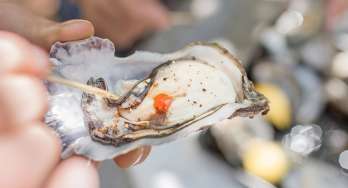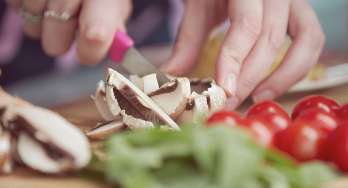Planning your epic journey
A month on the road in New Zealand is an unforgettable experience, but a little planning goes a long way to make it smooth and stress-free. From choosing the right campervan to mapping out your route, here are some of my tips on what to keep in mind before you hit the road.
My campervan rental tips
Over the years, I’ve tested out all sorts of campervans – everything from compact two-berth campers to fully kitted-out motorhomes. And trust me, choosing the right one makes a huge difference. If it’s just you and a partner, a smaller van might be all you need. But if you’re travelling with friends or family, you’ll be grateful for the extra space. Maui has a great range of campervans, so it’s worth thinking about what kind of setup will work best for you.
I always recommend asking a few key questions before booking:
-
Does the price include unlimited mileage, or will you be hit with extra fees for longer drives?
-
What’s covered by insurance, and how much is the excess?
-
Are things like bedding, kitchen gear, and outdoor chairs included, or will you need to bring your own?
-
What’s the roadside assistance like? I’ve never had a major breakdown (touch wood), but knowing help is just a phone call away gives me peace of mind, especially when driving through more remote areas.
Oh, and if you’re planning a trip in summer, take my advice and book early. I’ve learnt the hard way that leaving it too late can mean either missing out or paying way more than expected. December to February is peak season, and campervans disappear fast – so lock yours in as soon as you can.
Essential gear
Packing for a New Zealand road trip is all about being prepared for anything. The weather in New Zealand can be unpredictable, so layers are a good option. I always bring a good rain jacket, a warm fleece, and clothes I can mix and match depending on the temperature. Even in summer, it’s worth having something cosy for those crisp mornings and cooler evenings.
Then there are the little things that make life on the road easier. If you’re travelling with kids, pack a few extra comfort items – favourite toys, books, or anything that helps keep them entertained on long drives. A reusable water bottle is a must, as is sunscreen and bug spray (sandflies can be ruthless in some areas). I also always bring a power bank for charging my phone, especially when staying somewhere without powered sites.
One thing I love about maui campers is that they come fully stocked with all the must-haves like cooking and eating utensils, washing-up gear, bedding, and pillows, so you don’t need to worry about bringing any of that. It makes packing a whole lot simpler, leaving more room for the fun stuff.
For navigation, a mix of tools works best. I use GPS for directions but always download offline maps in case of patchy reception. The thl Roadtrip app is worth having on hand. It not only helps with navigation but also points out nearby campsites, dump stations, and attractions along the way. A physical map can be handy too, especially when planning routes without too many screen distractions.
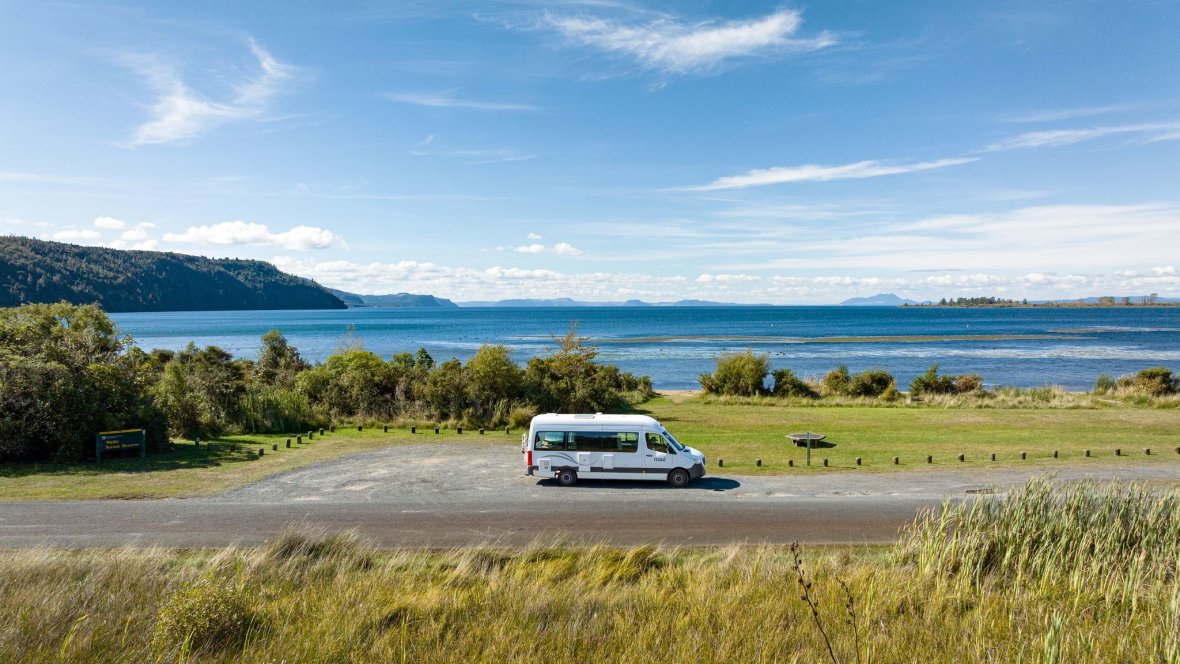
Helpful budgeting
A month on the road in New Zealand is an incredible experience, but it pays to have a rough budget in mind. I’ve learnt that costs can add up quickly if you’re not careful – especially when you’re filling up the fuel tank more often than expected. Here are a few things to think about:
-
Campervan rental – Prices depend on the season, the size of the van, and how early you book. In summer, rentals go fast and cost more, while off-season trips can be much cheaper.
-
Fuel – This is one of the biggest expenses, and those long scenic drives add up. I always use the Gaspy app to find the cheapest fuel nearby.
-
Campsites – Holiday parks are great when you want power, showers, and laundry facilities, but they cost around $30–$60 per night. I mix these with DOC (Department of Conservation) campsites, which are more affordable at $8–$20 per person, and the occasional freedom camping spot.
-
Activities – Some of the best things in New Zealand – hiking, beach days, scenic drives – are free, but you might like to budget for a few big-ticket experiences, like a Milford Sound cruise or a heli-hike on a glacier. It’s about finding the right balance.
-
Food – Eating out gets expensive fast, so I mostly cook in the campervan. I always stock up on groceries before heading to remote areas, and farmers' markets are my go-to for fresh fruit and veggies.
My driving tips
New Zealand is an incredible place to road trip, but if you’re not used to the roads here, there are a few driving rules to keep in mind.
First up – New Zealanders drive on the left. It sounds obvious, but if you’re visiting from a country that drives on the right, it takes some getting used to. I’ve heard of people accidentally pulling out onto the wrong side after a quick petrol stop, so it’s worth staying extra alert, especially on quiet roads.
Speaking of roads, New Zealand’s can be narrow, winding, and unpredictable. Mountain passes, one-lane bridges, and gravel roads pop up more often than you’d think. The key is to take your time – don’t rush, and pull over when it’s safe if traffic builds up behind you. Some roads, like The Crown Range Road near Queenstown, are completely off-limits for rental campervans, so always check for road restrictions before heading off the beaten track.
My ultimate road trip itinerary
After years of exploring New Zealand by campervan, I’ve figured out the perfect one-month route – a mix of iconic must-sees, hidden gems, and plenty of time to slow down and soak it all in.
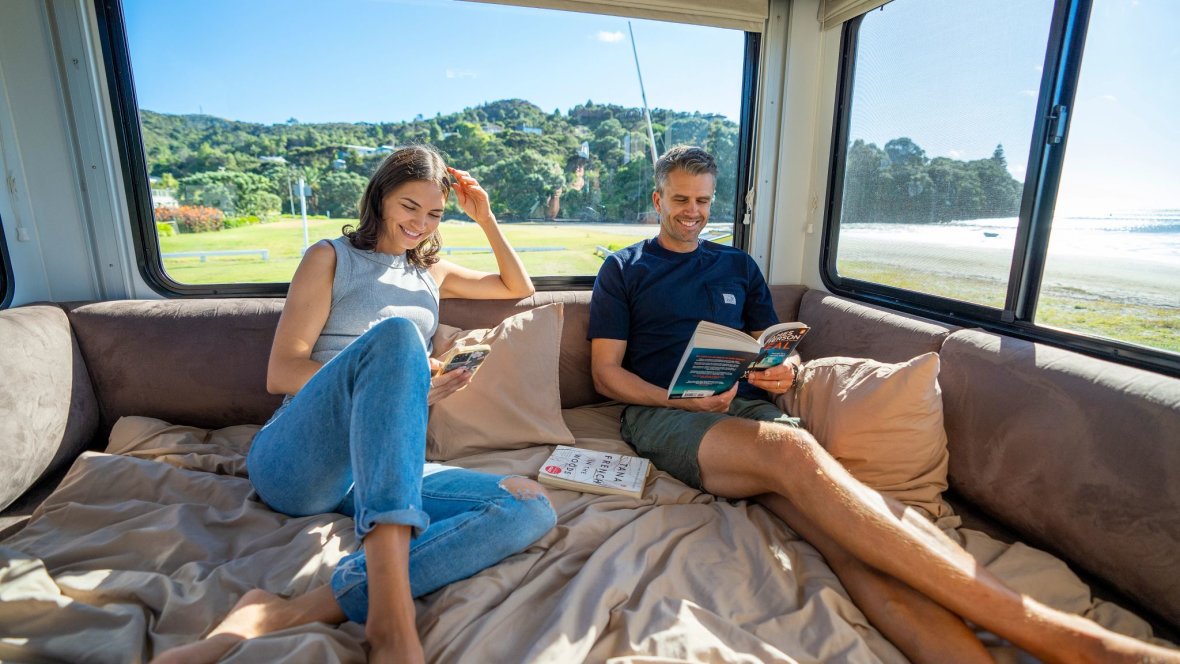
Days 1-3: Auckland – The City of Sails
Maui’s Auckland branch is nice and handy to Auckland International Airport, so if you’re flying in, picking up the campervan is quick and easy. Once you’ve got the keys and done a quick check of the essentials, it’s time to hit the road.
Auckland is a city that deserves at least a couple of days before heading off. It’s surrounded by water, so I usually start by stretching my legs along the Viaduct Harbour and the Auckland waterfront, soaking up the sea breeze and watching the boats come and go. If you want a proper view of the city, the Sky Tower is a classic, but my favourite is the short walk up Maungawhau / Mount Eden—the views over the harbour are just as good, and it’s free.
For food, there’s no shortage of great spots, but my personal favourite spots are Britomart or Ponsonby. If you’re after fresh seafood, Oyster & Chop does a divine plate of fish and chips, and if dumplings and noodles are more your thing, Eden Noodles is a no-frills, flavour-packed local gem.
For the first night, I like to keep things simple and stay close to the city before tackling a longer drive. Takapuna Beach Holiday Park is a top pick – right on the waterfront and just far enough out of the CBD to feel like the trip has properly begun.
Days 4-5: Coromandel Peninsula
The drive from Auckland to the Coromandel is when the road trip really kicks in. Coastal roads, rolling hills, and those classic pohutukawa trees leaning over the shoreline – it’s the kind of drive that takes longer than expected because you’ll keep stopping to take it all in.
First stop, Hot Water Beach. At low tide, you can dig your own thermal pool in the sand – just hire a shovel from the surf shop on site and find a warm spot to soak. Not far away, the walk to Cathedral Cove is well worth the effort, but check tide times as the beach disappears at high tide.
For a base, Whitianga is a great spot with plenty of places to eat, while Pauanui has a more laid-back vibe.
A good campervan-friendly spot by the beach is Shelly Beach TOP 10 Holiday Park – right by the water, with a peaceful, tucked-away feel.
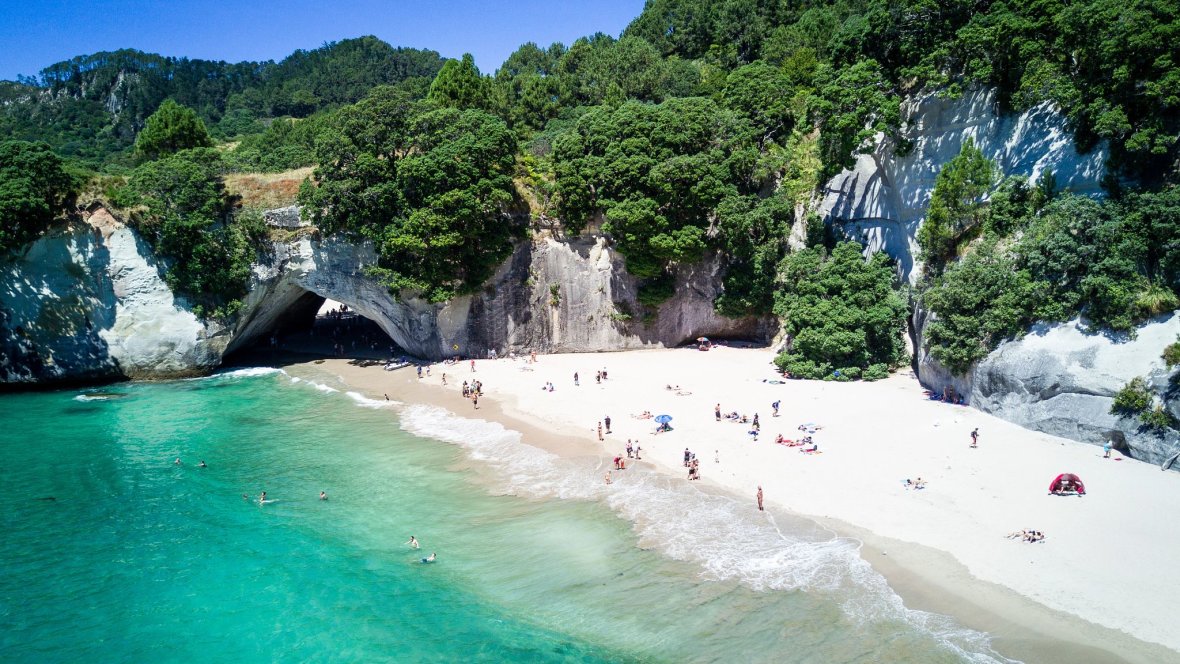
Days 6-8: Rotorua & Taupō – Geothermal wonders & adventure
As soon as you roll into Rotorua, you’ll know it – there’s a distinct sulphur smell in the air, thanks to all the geothermal activity. I’ve always found it part of the charm. Te Puia is a great intro to the region, with bubbling mud pools, steaming vents, and the powerful Pōhutu Geyser, which erupts like clockwork. For otherworldly colours, Wai-O-Tapu is a must-see – the Champagne Pool is straight out of a sci-fi movie.
Rotorua is also the best place to experience Māori culture. A hangi dinner and cultural performance is well worth it – slow-cooked food straight from the earth, plus haka and waiata that make for an unforgettable night.
From here, it’s a short drive to Taupō – home to Huka Falls, epic mountain biking trails, and serious adventure sports. The lake is massive – bigger than Singapore – and perfect for kayaking or a boat trip to the Māori rock carvings. For camping, Rotorua TOP 10 and Taupō DeBretts Holiday Park are great options.
Days 9-10: Tongariro National Park – Hiking & volcanic landscapes
Tongariro National Park is one of those places I never get tired of. No matter how many times I visit, the landscapes still feel unreal – vast volcanic valleys, bright emerald lakes, and rugged peaks that make you feel like you’ve landed on another planet.
The Tongariro Alpine Crossing is the ultimate way to experience it. It’s a full-day, 19.4 km hike over steep ridges and exposed terrain, so you’ll need a decent level of fitness and plenty of snacks. The first time I did it, I underestimated how tough the uphill sections would be, but the view from Red Crater made every step worth it. Since it’s a one-way track, booking a shuttle in advance is essential – parking at the trailheads is limited.
If you’d rather take it easy, there are plenty of shorter walks. The Tama Lakes Track is a great half-day option with panoramic views of Mount Ruapehu, while the Taranaki Falls Walk is an easy loop that takes you through alpine meadows to a spectacular waterfall.
For camping, Whakapapa Holiday Park is a handy base with all the essentials. There are also a few DOC campsites nearby if you’re after something more low-key. Some car parks allow overnight stays for self-contained campervans, but it’s always worth double-checking the latest rules before you go.
Days 11-13: Wellington – New Zealand’s capital
The drive south to Wellington is a mix of rolling farmland, rugged coast, and classic Kiwi towns. If you’re taking the ferry, book in advance – summer crossings fill up fast. Both Interislander and Bluebridge take campervans, and if the weather’s good, the approach into the Marlborough Sounds is stunning.
Wellington might be small, but it’s packed with things to do. The Te Papa Museum is always worth a stop – it’s free and has incredible exhibits (including the world’s largest colossal squid). A wander along the waterfront is a must, and if you want a great view, the Wellington Cable Car takes you up to the Botanic Gardens, with an easy walk back down through the city.
Food-wise, Wellington is one of my favourite places to eat. The coffee is next level – spots like Flight Coffee’s The Hangar do a great brew – and the city’s packed with bars and restaurants. I always end up at Logan Brown for something special or grab dumplings from Mr. Go’s for a more casual bite.
For camping, Wellington TOP 10 Holiday Park is a good choice just outside the city, with easy access to the ferry terminal.
 Image: Tourism New Zealand
Image: Tourism New Zealand
Days 14-15: Marlborough & the wine region
Arriving in the South Island by ferry always feels like a fresh start. The journey through the Marlborough Sounds is incredible – steep forested hills dropping straight into bright blue water. From Picton, I take my time driving towards Blenheim, stopping for a coffee or a short coastal walk along the way.
Marlborough is wine country, best known for its sauvignon blanc. There are over 150 wineries in the region, and many have cellar doors open for tastings. A few favourites include Cloudy Bay, Wairau River, and Forrest Wines. If you’re driving, a good option is to share tastings or stick to one or two vineyards – or better yet, park the camper and join a wine tour.
For camping, Blenheim Bridges Holiday Park is a great base for exploring the region.
Days 16-18: Abel Tasman National Park – Hiking & beaches
The Abel Tasman Coast Track is one of New Zealand’s Great Walks, and while the full 60 km route takes multiple days, you can easily tackle a section as a day hike. If you’re keen, book a water taxi in advance to drop you at a starting point and hike back. Kayaking is another must-do – paddling past secluded bays and fur seals basking on the rocks never gets old.Camping inside the park is limited to DOC sites, but for campervans, Totaranui Campground or Marahau Beach Camp are great spots to base yourself.
Days 19-21: West Coast – Glaciers & rainforests
The West Coast drive is one of my favourites – wild coastline on one side, dense rainforest on the other, and barely any traffic. It’s the kind of road where you don’t rush. There are plenty of places to pull over, whether it’s for a quick beach walk or to check out the famous pancake rocks at Punakaiki.
Further south, Glacier Country is a highlight. Both Franz Josef and Fox Glacier are incredible, but they’ve changed a lot over the years due to ice retreat. The best way to experience them now is by heli-hike – flying up and walking on the ice itself. If that’s not your thing, there are great walks to the glacier viewpoints.
For camping, Franz Josef TOP 10 and Fox Glacier TOP 10 are both nice options with easy access to the trails.
Days 22-24: Queenstown – Adventure capital
The drive into Queenstown over Haast Pass is one of those stretches of road where you’ll constantly be pulling over – waterfalls, deep valleys, and those unreal blue lakes that look too perfect to be real.
Queenstown is all about getting outside. If you’re into adrenaline, there’s bungy jumping at the Kawarau Bridge (I’ve done it once, and that was enough), jet boating through the Shotover Canyon, or some serious white-water rafting. For a more chilled-out experience, I love taking the Skyline Gondola up for the views over Lake Wakatipu – then racing friends down the luge track.
For camping, Queenstown TOP 10 is a good base just outside town, while Driftaway Queenstown has amazing lakefront spots.
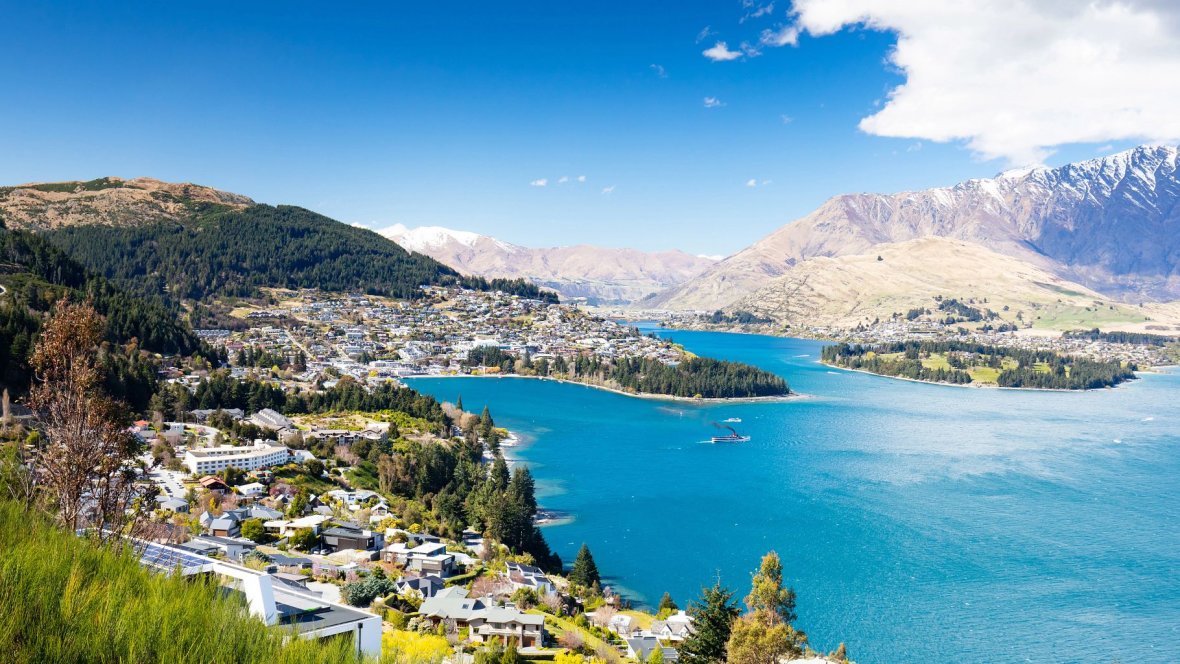
Days 25-27: Fiordland & Milford Sound
The drive to Milford Sound is just as special as the destination itself. The road winds through Fiordland’s deep valleys, past mirror-like lakes and waterfalls that tumble straight down sheer cliffs.
A Milford Sound cruise is a must – no matter the weather. I was lucky enough to do it on a clear day, but I’ve also seen it in the rain, and there’s something incredible about the way the waterfalls multiply, pouring down from every direction. Either way, it’s an experience you won’t forget.
For hiking, the Key Summit Track is a great half-day option with epic views. Camping is limited near Milford, but Cascade Creek DOC Campsite is a stunning spot right on the way in.
Days 28-30: More of Queenstown and Arrowtown
For those last few days, take the chance to see more of Queenstown – because no matter how much time you spend here, there’s always something left to do. If you skipped a hike the first time around, the Ben Lomond Track is a solid challenge with unbeatable views. Or, if you’re after something more relaxed, take a scenic drive to Glenorchy. The road follows the edge of Lake Wakatipu, and every twist and turn gives you another postcard-perfect view.
Arrowtown is another must-visit just 20 minutes drive away. It’s a charming little gold rush town with heritage buildings, great cafes, and some of the best autumn colours in the country if you time it right.
When it’s time to wrap up the trip, you can leave your camper at maui’s Queenstown branch.
After a month of incredible drives, lakeside campsites, and unplanned detours that turned into trip highlights, handing back the keys always feels a bit surreal – like you could happily keep going for another few weeks. But that’s the thing about road-tripping in New Zealand… there’s always a reason to come back.
Ready to hit the road?
A month in a campervan is the best way to see New Zealand – waking up to new views every morning, taking detours whenever something catches your eye, and finding those little hidden spots you’d never get to on a regular trip.
From Auckland’s buzzing waterfront to the wild landscapes of Fiordland, this road trip has covered it all – beaches, mountains, vineyards, adventure, and plenty of coffee stops in between. Whether you’re ticking off bucket-list destinations or rediscovering old favourites, there’s no better way to do it than with the freedom of a campervan.
If you’re thinking about your own New Zealand roadie, now’s the time to start planning. Check out maui’s range of fully equipped campervans and book the perfect camper for your trip – then all that’s left to do is hit the road and see where it takes you.
.jpg)
